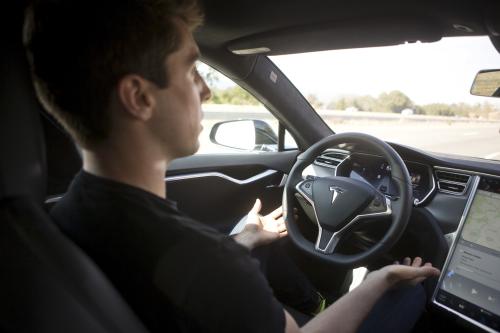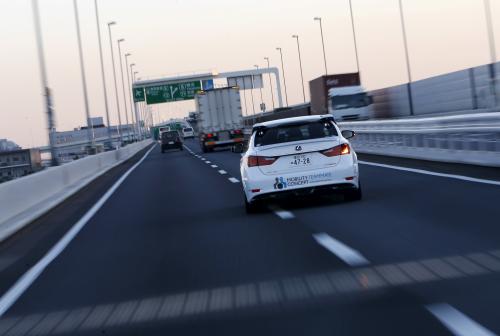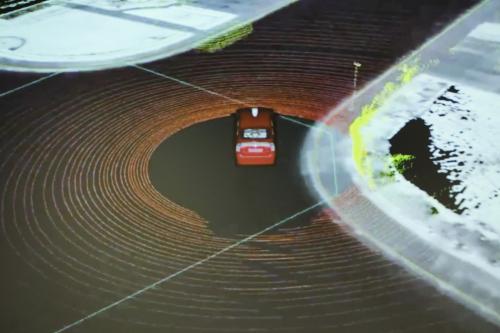The Department of Transportation and the National Highway Traffic and Safety Administration released long-awaited policy guidance for autonomous vehicles on September 19. The new policy seeks to harmonize rules for states and driverless car developers in a way that promotes both public safety and innovation. In a new paper, Darrell West discusses the societal benefits of driverless cars as well as the technical and regulatory barriers to their adoption. The technology has the potential to reduce traffic congestion, air pollution, and traffic fatalities, yet driverless cars remain susceptible to bad weather conditions, digital hacking, and limited wireless spectrum. West also analyzes the regulatory landscape in China, Japan, Korea, Europe, and the United States and recommends policies to pave the way for driverless cars.
The World Economic Forum predicts that driverless cars will generate an additional $67 billion in auto industry revenue while providing $3.1 trillion in societal benefits. Driverless cars can improve traffic flows by communicating with other vehicles and smart infrastructure, cutting down on commute times and air pollution created by personal vehicles. Urban traffic is further reduced by cars that can park themselves: the economist Donald Shoup estimates that 30 percent of traffic in metropolitan areas results from drivers looking for parking. Driverless cars would also enhance personal mobility in countries with aging populations that can no longer drive by themselves.
To operate without a human driver, autonomous vehicles are outfit with an array of sensors that collect data on their surroundings. Cameras take pictures of road markings, and LiDAR sensors scan for approaching vehicles and other obstacles. Roads must have clearly defined lane markings and signage, while high-definition maps of road networks update cars on their precise location and changing road conditions. Bad weather, poor infrastructure, or inaccurate maps can make navigation more difficult. Driverless cars will also need adequate wireless spectrum to communicate with each other and with smart traffic signals, as well as cybersecurity protections to prevent the hacking of these systems.
According to West’s paper, regulatory hurdles for driverless vehicles are numerous and revolve around collecting data for maps, testing cars on roads, and manufacturing restrictions—among other challenges. China benefits from national oversight of driverless cars, but still bans road testing and the collection of high-resolution data for maps. Similarly, data protection and privacy rules in the EU would make it difficult for companies to use data collected by driverless cars. State laws in the U.S. mandate a steering wheel, brakes, and a licensed driver behind the wheel, contradicting some vehicle designs that forgo all these features. According to West, countries seeking to adopt driverless cars should strive for clarity in their regulations.
Questions remain about how driverless cars would act to avoid collisions and who would be at fault when they do occur. Are the advanced algorithms that guide cars equipped to choose between the safety of its passengers, pedestrians, and other vehicles in the case of an emergency? Meanwhile, automotive insurers are determining whether the owner or the manufacturer holds liability for a driverless car. These questions will become increasingly important now that automakers plan to produce driverless cars as early as 2021. This month, Uber has already begun testing driverless cars (with human drivers ready to take over) for its rideshare service in Pittsburgh.
Soon, people around the world will have driverless options for taking them safely to their destinations, which is why, West writes, “It’s essential for leaders to provide reasonable guidance on how to commercialize advanced technologies in transportation.” Once those technologies have matured and such regulations are finalized, it will be public acceptance that ultimately impacts how quickly and widely driverless cars are adopted.
Read the paper “Moving forward: Self-driving vehicles in China, Europe, Japan, Korea, and the United States” here.







Commentary
New paper examines the promise and policy of driverless cars
September 20, 2016